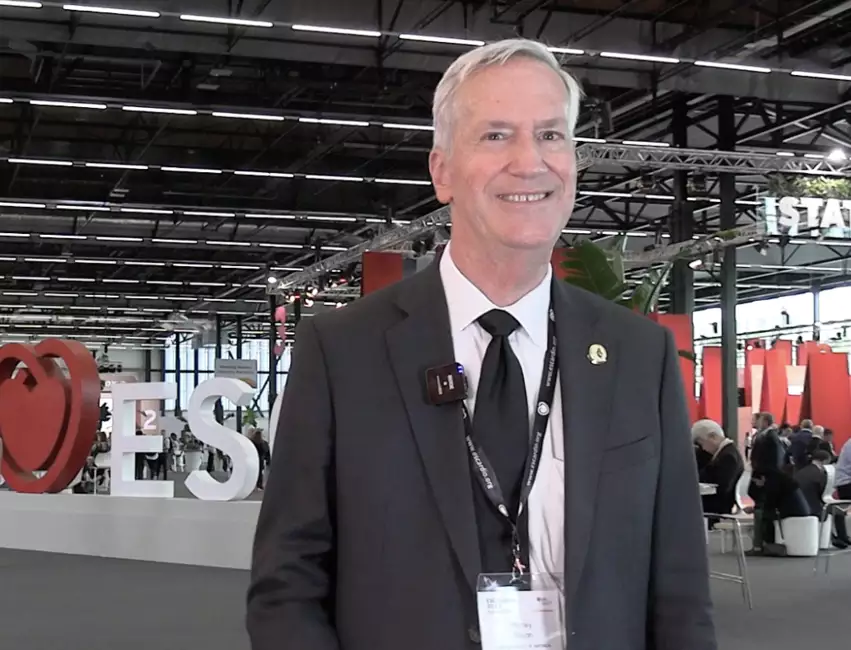Q&A: A closer look at the push in cardiology for a new, independent American Board of Cardiovascular Medicine
On Thursday, Sept. 21, four of the largest cardiovascular health organizations in the United States made a big announcement: They are working toward the creation of a brand new medical board that would be completely independent of the American Board of Internal Medicine (ABIM).
The American College of Cardiology (ACC), Heart Failure Society of America (HFSA), Heart Rhythm Society (HRS) and Society for Cardiovascular Angiography & Interventions (SCAI) have been collaborating on their application to the American Board of Medical Specialties (ABMS) for approximately three months. Another leading U.S. society, the American Heart Association (AHA), has helped with the application, but is still deciding how it wants to proceed.
Cardiologists and others within the specialty have been growing frustrated with the ABIM’s maintenance of certification (MOC) system for years now. This new Board of Cardiovascular Medicine, the groups explained in their announcement, would embrace a “competency-based approach” to physician certification and work to replace “high-stakes performance exams” with “learning assessments” that can be used as opportunities to improve.
ACC President B. Hadley Wilson, MD, a practicing interventional cardiologist and executive vice chair at Sanger Heart and Vascular Institute/Atrium Health in Charlotte, North Carolina, spoke with Cardiovascular Business about why the ACC, HFA, HRS and SCAI are so invested in creating a new medical board independent of the ABIM.
Read the full conversation below:
What led to this decision? How long have you and the other U.S. groups been collaborating with this goal in mind?
B. Hadley Wilson, MD: This is something that we've actually been planning for years. Around a decade ago, the ACC’s leaders started to grow more and more concerned about how we maintain competency and certify our cardiologists as they move forward through their careers. In the last two years or so, we started working in earnest because we felt the best way for cardiologists to be certified and competent would be by measures that other cardiologists would ascribe to them.
Essentially, we wanted to make certification qualifications relevant to the cardiology practice. We believed that was no longer possible through just being grouped with internal medicine, and we felt like cardiovascular medicine is its own distinct specialty. In fact, about 50% of cardiology division programs in the country are either completely separate from internal medicine divisions or at least separate financially. And that number of independent cardiology departments that are separate, distinct entities just continues to grow.
In the long run, we feel that this is going to be best for our patients—they will have the highest trained, most relevant, most up-to-date cardiovascular professionals taking care of them. And at the same time, this is about keeping as many competent cardiologists in the workforce as possible rather than having them, say, fail a single exam and then being essentially out of work. By the end of the decade, there could be a deficit of thousands of cardiologists in the U.S. alone—so we do not want cardiologists leaving the workforce simply because of their concerns related to certification.
What has it been like working together with these other societies on such a significant project?
It’s been a great process that has really brought us all together. About six months ago, we set up a work group that had equal representation from our four societies—five, actually, if you include the AHA—and we started writing our application for the new American Board of Cardiovascular Medicine about three months ago.
Also, we have been totally transparent with the ABIM about our initiative, and we’ve been encouraged by the ABMS to continue to pursue this path.
What is the timeline for this ongoing process?
We hope to have our application submitted in the next several weeks, maybe even toward the end of October. Some ABMS standards are changing for the better beginning in January 2024, and we wanted our application to meet those new standards.
This whole process is going to take several months, and probably closer to a year, so the sooner we can get started, the better.
What would a new American Board of Cardiovascular Medicine impact the lives of cardiologists?
We believe we are going to make a much more streamlined, relevant process that will be easier and potentially less costly. It will also be more transparent.
Importantly, we’re here to help cardiologists learn, because this new plan will involve finding out what the knowledge gaps are for cardiologists as they move through their careers.
While the current testing system comes down to a pass or fail, we will identify gaps in knowledge and then give cardiologists the direction, the materials and the information they need to improve in those areas so they can be tested again. They will know they’ve improved, and we’ll have evidence of that improvement.
I would imagine other physicians from other healthcare specialties are keeping a close eye on you and your colleagues as you move forward through this process.
Yes, sir. I think that’s quite possible.


